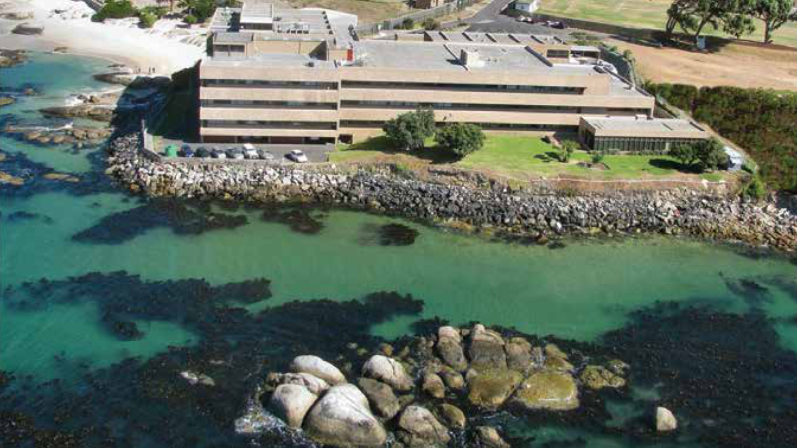The Simon’s Town-based Institute for Maritime Technology (IMT) recently showcased developments in capability and service, including artificial intelligence (AI) and virtual reality (VR), to top SA National Defence Force (SANDF) officials.
Navy News reports the visit was an opportunity for personnel “involved in acquisition” to gain insight into current project investment as well as future projects. The official SA Navy (SAN) publication has it IMT is “a strategic facility providing science-based technological and engineering support to the SAN including data management software and data display software systems”.
IMT’s Maritime Domain Awareness leader, Craig Dreyer, gave the visitors to the Martello Road facility an overview of sensors for air, land and sea use as well as a real-time demonstration of sensors and cameras showcasing data collection. Data acquired goes to building an overall picture of the South African EEZ (exclusive economic zone).
Jonathan Winnaar from the IMT Maritime Decision Support Element told the visitors work was underway on, among others, real-time drone detection using both AI and VR algorithms.
The SANDF delegation split into syndicates for capability demonstrations. These included underwater security, underwater sensors and signatures, naval electro-optics, environmental characterisation, maritime domain awareness and naval systems sub-surface.
IMT is part of Armscor, housed in its service division along with Alkantpan, Gerotek, Hazmat and other specialist units. It is an accredited facility providing science-based technological and engineering support to the SAN and the wider maritime community.
It specialises in maritime technologies, defence research, development, testing and evaluation of maritime systems for the defence and commercial sector. Its facilities include laboratories, workshops, test platforms for boats, autonomous underwater vehicles (AUVs) and unmanned aerial vehicles (UAVs).
Among IMT highlights in recent years are development of a submarine tower escape system (TESS) in conjunction with the Council for Scientific and Industrial Research (CSIR) and ThyssenKrupp Marine Systems for the SAN; application of the VistaNet maritime domain awareness (MDA) software; and completion of a regional maritime domain awareness centre (MDAC) near Silvermine.
IMT is developing and testing an autonomous underwater vehicle (AUV) for mine countermeasures work using a side-scan sonar. The IMT has for a number of years worked on autonomous underwater vehicle technology for mine countermeasures work conducting multiple AUV tests for the SAN in Simon’s Town in 2015 as an example. In 2011, the SAN awarded the IMT a contract to develop autonomous underwater vehicle technology in line with a requirement for AUVs, including for four offboard mine-hunting systems in terms of Project Mapantsula.
IMT designed and developed an underwater locator beacon detection system in collaboration with the SAN to detect cockpit voice and flight data recorders on crashed or ditched aircraft. The underwater locator beacon (ULB) has been fitted to an unmanned surface vessel.
Early in 2019 IMT made a breakthrough in maritime safety and communications by installing the world’s first VDES base station, which allows significantly faster data transfers to and from ships, improving safety and maritime awareness. VDES stands for VHF (very high frequency) data exchange system and is based on the automatic identification system (AIS) currently used to track vessels over 300 tons, but is expected to replace or supplement AIS in the future. VDES will include two-way satellite communication to enable worldwide operation in future.



